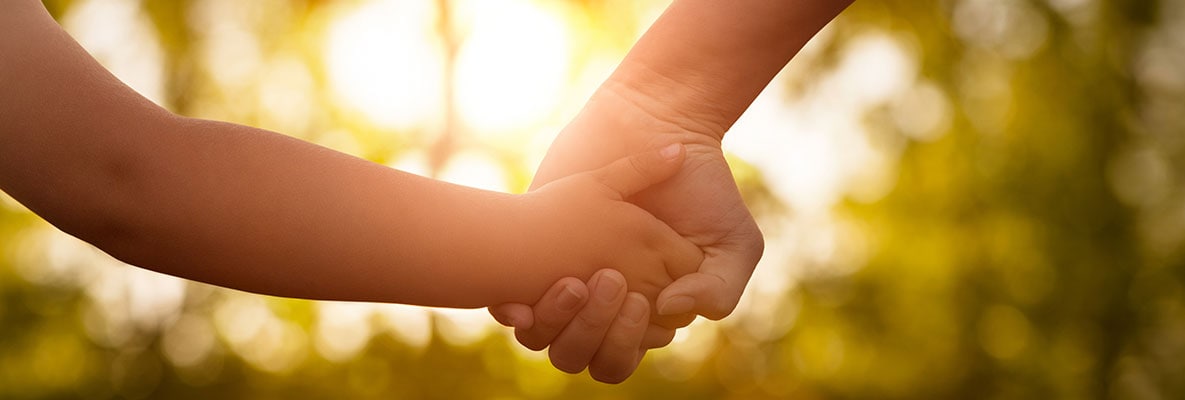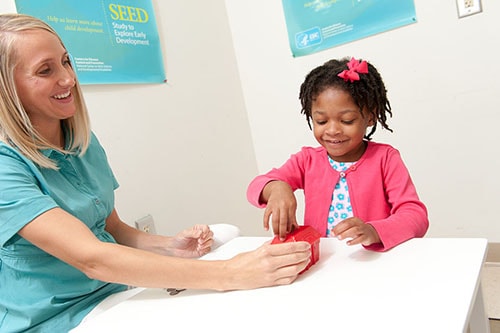Helping Your Child Cope with a Disaster

Disasters are stressful events that can cause substantial harm to communities and families. After a disaster, children may develop symptoms of anxiety, depression, and post-traumatic stress disorder. Mental health plays an important role in physical health, school performance, behavior, and long-term quality of life. Therefore, it is important to keep children physically and mentally safe during and after a disaster.
Why are children at risk for mental health issues after a disaster?
Emotional stress from a disaster can be harder on children because they:
- Understand less about the situation;
- Feel less able to control events;
- Have less experience dealing with stressful situations; and
- May not be able to communicate their feelings, such as fear or anxiety.
In addition, children who have previously experienced trauma or have a pre-existing mental, emotional, developmental, or behavioral disorder can be particularly vulnerable before a disaster occurs. For example, children with autism, as well as infants and toddlers, may have difficulty communicating their thoughts and feelings. Parents and caregivers can take steps to help their children cope with traumatic events.
How can parents and caregivers help children cope with a disaster?
Before:
- Discuss plans for emergencies and include your child in creating emergency supply kits and emergency action plans.
- Have a plan to reunite with family members as children may be separated from their caregivers during an emergency. If family members cannot return to their home, having an alternative meeting location, such as a community center, can help them reunite after a disaster.
- Learn about school safety drills taking place in your child’s school or childcare facility from the school principal and safety officials. Since drills vary by state, you can also look on your state’s Department of Education web page.
After:
- Answer your child’s questions truthfully in a way that he or she can understand. You can also correct misinformation about the event.
- Set an example for your child by managing your stress and returning to your normal routine and encouraging your child to do the same. Proceeding with your normal daily routine, such as eating meals as a family or returning to school and work, can help reduce stress.
- Give your child opportunities to talk about what he or she went through, or what he or she thinks about it. Encourage your child to share concerns and ask questions.
- Allow your child to be with you or another trusted adult who can help your child feel safe and calm and give him or her a sense of hope.
- Limit exposure to media coverage of the disaster and its aftermath. Children who are directly exposed to a disaster can become upset again if they see or hear reminders of what happened.
- Work with teachers and other adults, who see your child in different situations, to share information about how your child is coping.
When should parents and caregivers seek help from a professional?

Immediately after a disaster, children and adolescents may have these common emotional and behavioral reactions:
- Ages 1 to 5: Disobedience, fear of being separated from caregiver, and difficulty sleeping.
- Ages 6 to 10: Disobedience, fear of returning to school, and difficulty concentrating on tasks.
- Ages 11 to 18: Rebellious behavior, antisocial behavior, and depression.
A child’s emotional reactions after a disaster can vary. Consider talking to your child’s healthcare professional if:
- Your child continues to be very upset (anxious, fearful, sad, angry) for more than 2 to 4 weeks after the disaster;
- Your child’s problems worsen instead of improve over time; or
- Your child’s reactions affect their schoolwork or relationships with friends or family for a prolonged period.
Helping a child cope with a disaster can be a challenge for parents. Any time you feel it is necessary, reach out for professional help and support for you and your child. The Substance Abuse and Mental Health Services Administration (SAMHSA) Mental Health Services Locator can help you find support by calling 1-800-789-2647 or online at https://findtreatment.samhsa.gov/locator.
Additional Resources
Helping Children and Adolescents Cope with Violence and Disasters: What Parents Can Do (Spanish version)
Scientific References
- Cain SD, Plummer CA, Fisher RM, Bankston TQ. Weathering the Storm: Persistent Effects and Psychological First Aid with Children Displaced by Hurricane Katrina. J Child Adolesc Trauma. 2010;3:330-343.
- Abramson DM, Redlener IE, Stehling-Ariza T, Sury B, Banister AN, Park YS (2010). Impact on Children and Families of the Deepwater Horizon Oil Spill: Preliminary Findings of the Coastal Population Impact Study (https://academiccommons.columbia.edu/catalog/ac:128195)
- Abramson D, Stehling-Ariza T, Garfield R, Redlener I. Prevalence and Predictors of Mental Health Distress Post-Katrina: Findings from the Gulf Coast Child and Family Health Study. Disaster Med Public Health Prep. 2008;2:77-86.
- Furr JM, Comer JS, Edmunds JM, Kendall PC. Disasters and Youth: A Meta-Analytic Examination of Posttraumatic Stress. J Consult Clin Psychol. 2010;78:765-780.
- Ghandour RM, Sherman LJ, Vladutiu CJ, Ali MM, Lynch SE, Bitsko RH, et al. Prevalence and Treatment of Depression, Anxiety, and Conduct Problems in US Children. J Pediatr. 2019;206:256-267.
- Hafstad GS, Haavind H, Jensen TK. Parenting After a Natural Disaster: A Qualitative Study of Norwegian Families Surviving the 2004 Tsunami in Southeast Asia. J Child Fam Stud. 2012;21:293-302.
- Marsee MA. Reactive Aggression and Posttraumatic Stress in Adolescents Affected by Hurricane Katrina. J Clin Child Adolesc Psychol. 2008;37:519-529.
- NCCD. 2010 Report to the President and Congress: (https://archive.ahrq.gov/prep/nccdreport/nccdreport.pdf [1.15 MB / 192 pages])
- Pfefferbaum B, Jacobs AK, Houston JB, Griffin N. Children’s Disaster Reactions: The Influence of Family and Social Factors. Curr Psychiatry Rep. 2015;17:57.
- Powell T, Thomspon SJ (2014). Enhancing Coping and Supporting Protective Factors After a Disaster: Findings From a Quasi-Experimental Study. (https://journals.sagepub.com/doi/abs/10.1177/1049731514559422)
- Schonfeld DJ, Demaria T, Disaster Preparedness Advisory Council and Committee on Psychosocial Aspects of Child and Family Health. Providing Psychosocial Support to Children and Families in the Aftermath of Disasters and Crises. Pediatrics. 2015;136:e1120-e1130.
- Vasterman P, Yzermans CJ, Dirkzwager AJ. The Role of the Media and Media Hypes in the Aftermath of Disasters. Epidemiol Rev. 2005;27:107-114.






















.png)











No hay comentarios:
Publicar un comentario